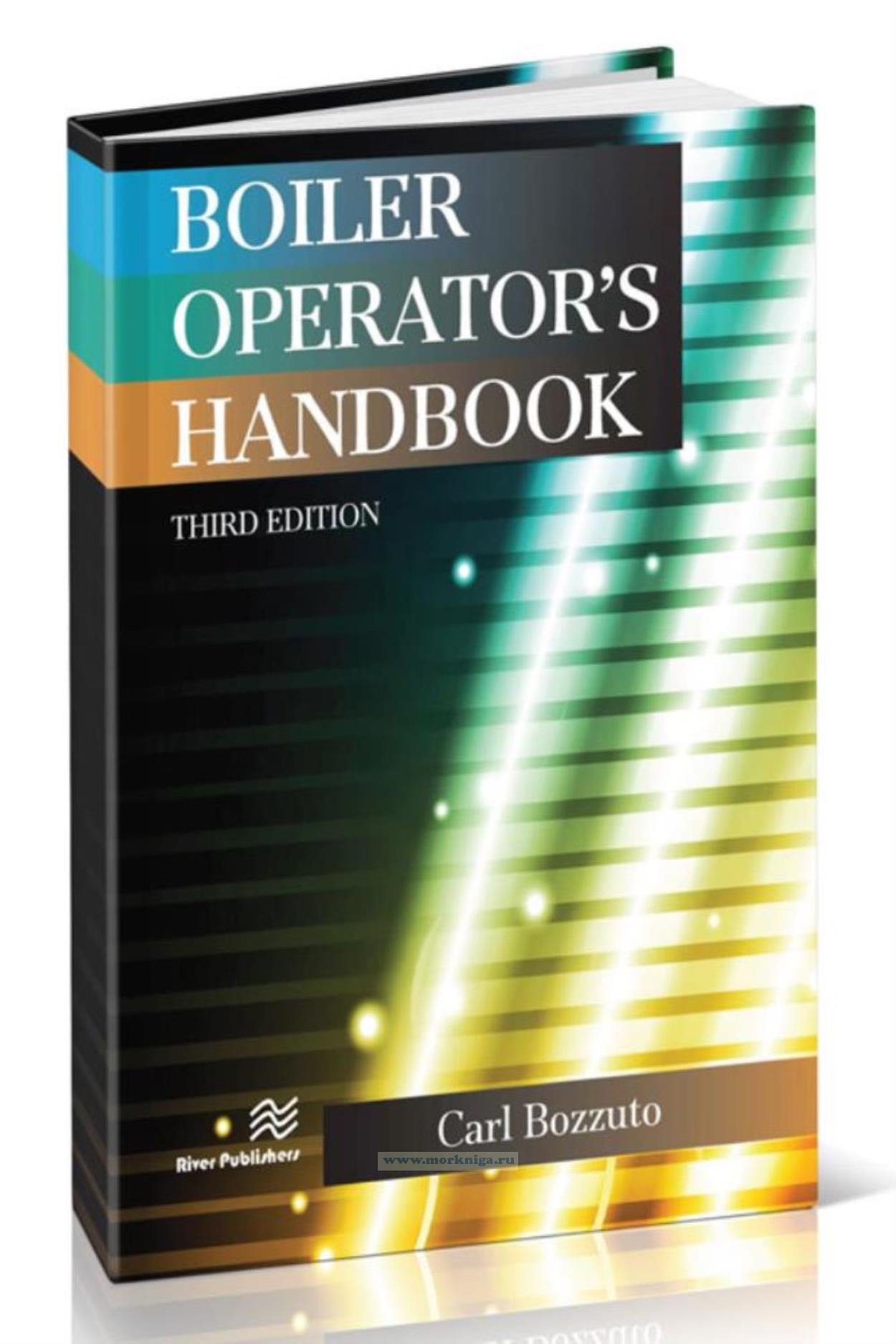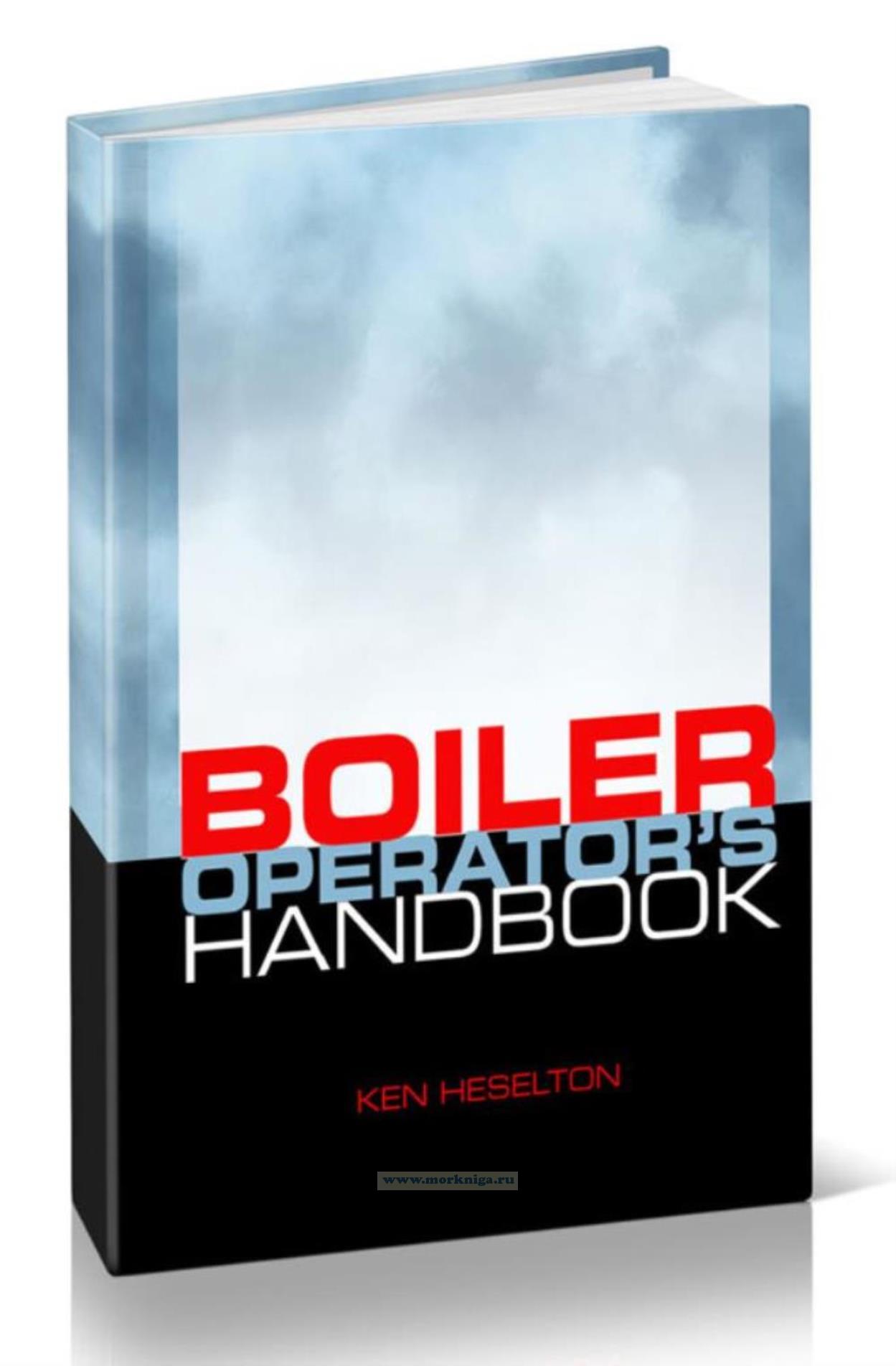Сб с 10 до 16
Boiler Operator’s Handbook/Справочник оператора котла
Книга на английском языке
Издание 2004 года
This book is written for the boiler operator, an operating engineer or stationary engineer by title, who has knowledge and experience with operating boilers but would like to know more and be able to operate his plant wisely. It is also simple enough to help a beginning operator learn the tricks of the trade by reading the book instead of learning the old-fashioned way (through experience) some of which can be very disagreeable. The book can also be used by the manager or superintendent who wants a reference to understand what his operators are talking about. It’s only fair, however, to warn a reader of this book that it assumes a certain amount of experience and knowledge already exists.
Table of Contents
Chapter 1 - Operating wisely
Why wisely?
Prioritizing
Safety
Measurements
Flow
What happens naturally
Water, steam and energy
Combustion
The central boiler plant
Electricity
Documentation
Standard Operating Procedures
Disaster Plans
Logs
Chapter 2 - Оperations
Operating Modes
Valve manipulation
New startup
Dead plant startup
Normal boiler startup
Emergency boiler startup
Normal operation
Idle equipment
Superheating
Switching fuels
Standby operation
Rotating (alternating) boilers
Bottom blowoff
Annual inspection
Operating during maintenance and repairs
Pressure testing
Lay-up
Tune-ups
Auxiliary turbines
Chapter 3 - What the wise operator knows
Know your load
Know your plant
Matching equipment to the load
Efficiency
Performance monitoring
Modernizing and upgrading
Chapter 4 - Special systems
Vacuum systems
Hydronic heating
High temperature hot water (HTHW)
Organic fluid heaters and vaporizers
Service water heating
Waste heat service
Chapter 5 - Maintenance
Maintenance
Cleaning
Instructions and specifications
Lock-out, tag-out
Lubrication
Insulation
Refractory
Packing
Controls and instrumentation
Lighting and electrical equipment
Miscellaneous
Replacements
Maintaining efficiency
Records
Chapter 6 - Consumables
Fuels
Fuel gases
Oils
Coal
Other solid fuels
Water
Treatment chemicals
Miscellaneous
Chapter 7 - Water treatment
Water treatment
Water testing
Pretreatment
Feedwater tanks and deaerators
Blowdown
Chemical treatment
Preventing corrosion
Preventing scale formation
Chapter 8 - Strength of materials
Strength of materials
Stress
Cylinders under internal pressure
Cylinders under external pressure
Piping Flexibility
Chapter 9 - Plants and equipment
Types of Boiler Plants
Boilers
Heat transfer in boilers
Circulation
Construction
Boiler, cast iron and tubeless
Firetube boilers
Watertube boilers
Trim
Heat traps
Burners
Pumps
Fans and blowers
Cogeneration
Chapter 10 - Controls
The basics
Self contained controls
Linearity
Steam pressure maintenance
Fluid temperature maintenance
Fluid level maintenance
Burner management
Firing rate control
Low fire start
High-Low
Burner cutout
Jackshaft control
Establishing linearity
Startup control
Parallel positioning
Inferential metering
Steam flow / air flow
Full metering cross limited
Dual fuel firing
Choice fuel firing
Oxygen trim
Combustibles trim
Draft control
Feedwater pressure control
Instrumentation
Chapter 11 - Why they fail
A little bit of history
Low water
Thermal Shock
Corrosion and wear
Operator error and poor maintenance
Appendices
Properties of water and steam
Water pressure per foot head
Nominal capacities of pipe
Properties of pipe
Secondary ratings of joints, flanges, valves, and fittings
Pressure ratings for various pipe materials
Square root curve
Square root graph paper
Viscosity conversions
Thermal expansion of materials
Value conversions
Combustion calculation sheets
Excess air/O2 curve
Properties of Dowtherm A
Properties of Dowtherm J
Chemical Tank Mixing Table
Suggested mnemonic abbreviations for device identification
Specific heats of common substances
Design temperatures for selected cities
Code Symbol Stamps
Bibliography
Index
Издание 2021 года
The “River Publishers Series in Energy Engineering and Systems” is a series of comprehensive academic and professional books focussing on the theory and applications behind various energy-related technologies and control systems. The series features handbooks for related technology, as well as manuals on the fundamentals and theoretical aspects of energy engineering projects.
The main aim of this series is to be a reference for academics, researchers, managers, engineers, and other professionals in related matters with energy engineering and control systems.
Table of Contents
Chapter 1—Operating Wisely
Why Wisely?
Prioritizing
Safety
Measurements
Trends And Charting
Flow
Pressure Drop And Flow
What Comes Naturally
Water, Steam, and Energy
The Steam and Water Cycle
Combustion
The Central Boiler Plant
Electricity
Documentation
Standard Operating Procedures
Disaster Plans
Logs
Chapter 2—Boiler Plant Operations
Operating Modes
Valve Manipulation
New Startup
Dead Plant Startup
Normal Boiler Startup
Emergency Boiler Startup
Normal Operation
Safety Testing
Idle Systems
Superheating
Switching Fuels
Standby Operation
Rotating Boilers
Bottom Blow Off
Continuous (Surface) Blowdown
Annual Inspection
Operating During Maintenance and Repair
Code Repairs
Pressure Testing
Lay Up
Tune Ups
Auxiliary Turbine Operation
Power Turbine Operation
Chapter 3—What The Wise Operator Knows
Know The Load
Know The Plant
Matching Equipment to the Load
Efficiency
Performance Monitoring
Modernizing and Upgrading
Chapter 4—Special Systems
Special Systems
Vacuum Systems
Hydronic Heating
Boiler Water Circulating Pumps
HTHW Boiler Plants
Organic Fluid Heaters and Vaporizers
Service Water Heating
Waste Heat Service
Once-Through Boilers
Engines and Emergency Generators
Gas Turbines
HRSGS and Combined Cycle Plants
Chapter 5 —Refrigeration And Air Conditioning
Refrigerants
The Refrigeration Cycle
Refrigerant Superheat and Sub-Cooling
Evaporators
Freezing and Ice Storage
Compressors
Condensers
Throttling Devices
Miscellaneous Components of a Refrigeration System
Cooling Towers
Air Conditioning
Chapter 6— Maintenance
Maintenance
Cleaning
Instructions and Specifications
Lock Out, Tag Out
Lubrication
Insulation
Refractory
Packing
Controls and Instrumentation
Lighting and Electrical Equipment
Voltage and Current Imbalance
Eddy Current Testing
Miscellaneous
Replacements
Maintaining Efficiency
Records
Chapter 7 — Consumables
Fuels
Fuel Gases
Fuel Oil
Coal
Other Solid Fuels
Water
Treatment Chemicals
Miscellaneous
Chapter 8 — Water Treatment
Water Treatment
Water Testing
Pretreatment
Boiler Feed Tanks and Deaerators
Blowdown
Chemical Treatment
Preventing Corrosion
Preventing Scale Formation
Chapter 9 — Strength Of Materials
Strength of Materials
Stress
Cylinders Under Internal Pressure
Cylinders Under External Pressure
Piping Flexibility
Chapter 10 — Plants And Equipment
Types of Boiler Plants
Boilers
Heat Transfer In Boilers
Circulation
Boiler Construction
Fire Tube Boilers
Water Tube Boilers
Trim
Heat Traps
Burners
Pumps
NPSH
Fans and Blowers
Cogeneration
Gas Turbines, Engines, and HRSGs
Chapter 11 — Controls
Controls
Self-Contained Controls
Control Linearity
Steam Pressure Maintenance
Fluid Temperature Maintenance
Fluid Level Maintenance
Burner Management
Firing Rate Control—General
Firing Rate Control—Low Fire Start
Firing Rate Control—High/Low
Firing Rate Control—Burner Cut Out
Firing Rate Control—Jackshaft
Establishing Linearity
Startup Control
Firing Rate Control— Parallel Positioning
Firing Rate Control—Add Air Metering
Firing Rate Control— Inferential Metering
Firing Rate Control— Steam Flow/Air Flow
Firing Rate Control—Full Metering
Firing Rate Control—Dual Fuel Firing
Firing Rate Control—Choice Fuel Firing
Firing Rate Control—Oxygen Trim
Draft Control
Feed Water Pressure Controls
Instrumentation
Chapter 12— Why They Fail
Why They Fail
Low Water
Thermal Shock
Corrosion and Wear
Operator Error and Poor Maintenance
Appendix A — Properties of Water and Steam
Properties of Water and Steam
Appendix B — Water Pressure Per Foot Head
Appendix C — Nominal Capacities of Pipe
Appendix D — Properties of Pipe
Properties of Pipe
Appendix E — Secondary Ratings
Secondary Ratings of Joints, Flanges, Valves, and Fittings
Appendix F — Pressure Ratings for Various Pipe Materials
Appendix G — Square Root Flow Curve
Appendix H — Square Root Graph Paper
Appendix I — Viscosity Conversions
Appendix J — Thermal Expansion of Materials
Appendix K — Value Conversions
Appendix L — Excess Air/O2 Curve
Appendix M — Properties of Dowtherm A
Appendix N — Properties of Dowtherm J
Appendix O — Chemical Tank Mixing Table
Appendix P — Suggested Mnemonic Abbreviations
Appendix Q — Specific Heats of Some Common Materials
Appendix R — Design Temperatures and Degree Days
Appendix S — Code Symbol Stamps
Bibliography
Abbreviations
Index
Biography

